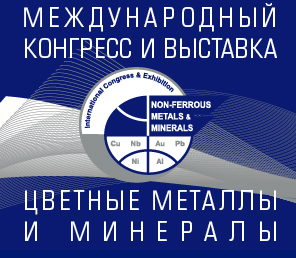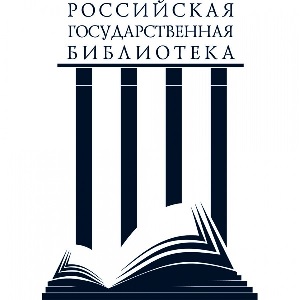СПЕКТРОСКОПИЧЕСКИЕ И ТЕРМОХИМИЧЕСКИЕ СВОЙСТВА СОЕДИНЕНИЙ АКТИНОИДОВ ИЗ ПЕРВЫХ ПРИНЦИПОВ: МОЛЕКУЛЫ МОНОКСИДОВ ТОРИЯ И АМЕРИЦИЯ
Аннотация
Разработан релятивистский вариант составного (композиционного) ab initio вычисления спектроскопических и термохимических свойств молекул, предназначенный для высокоточного описания характеристик соединений актиноидов (An). В его основе лежит сочетание результатов расчетов квантово-химическими методами, очень полно учитывающими электронную корреляцию, например, CCSDT(Q), но принимающими во внимание только скалярные релятивистские эффекты, с результатами применения более строгих четырехкомпонентных релятивистских методов с гамильтонианом Дирака–Кулона. Очень высокая точность предложенного подхода продемонстрирована на примере молекул моноксидов тория и америция. Погрешность теоретических величин равновесного межъядерного расстояния re, частоты колебания ωe и энергии атомизации D0 молекулы ThO не превысила 0,001 Å, 2,5 см–1 и 0,5 ккал/моль соответственно. Первые потенциалы ионизации молекулы AmO и атома Am, вычисленные составным методом, отличаются от экспериментальных величин всего лишь на 0,03 эВ и 1 см–1 соответственно. Предложенный подход позволил впервые с высокой точностью определить параметры re, ωe и D0 молекулы AmO и молекулярного иона AmO+, а также второй и третий потенциалы ионизации атома америция. Результаты расчетов свидетельствуют о небольшом актиноидном сжатии связей An–O при переходе слева направо в ряду молекул ThO → UO → AmO: связь Am–O на 0,0073 Å короче, чем связь Th–O. Обнаружено, что величина re(An–O) линейно зависит от порядкового номера актиноида в периодической системе элементов. Результаты расчетов могут быть использованы в качестве эталона при параметризации и калибровке функционалов электронной плотности, применяемых при изучении An-содержащих молекул методами DFT.
Литература
Dewberry C.T., Etchison K.C., Cooke S.A. The pure rotational spectrum of the actinide-containing compound thorium monoxide. Phys. Chem. Chem. Phys. 2007. V. 9. N 35. P. 4895–4897. DOI: 10.1039/b709343h.
Edvinsson G., Selin L.-E., Åslund N. On the band spectrum of ThO. Ark. Fys. 1965. V. 30. P. 283–319.
Гурвич Л.В., Вейц И.В., Медведев В.А. Термодинамические свойства индивидуальных веществ. Т. IV. Кн. 1. М.: Наука. 1982. 623 с. Gurvich L.V., Veitz I.V., Medvedev V.A. Thermodynamic properties of individual substances. V. 4. Book 1. M.: Nauka. 1982. 623 p. (in Russian).
Infante I., Kovács A., La Macchia G., Rehaman Moughal Shahi A., Gibson J.K., Gagliardi L. Ionization energies for the actinide mono- and dioxides series, from Th to Cm: theory versus experiment. J. Phys. Chem. A. 2010. V. 114. N 19. P. 6007–6015. DOI: 10.1021/jp1016328.
Kovács A., Konings R.J.M. Computed vibrational frequencies of actinide oxides AnO0/+/2+ and AnO20/+/2+ (An = Th, Pa, U, Np, Pu, Am, Cm). J. Phys. Chem. A. 2011. V. 115. N 24. P. 6646–6656. DOI: 10.1021/jp202538k.
Buchachenko A.A. Communication: Electric properties of the ThO (X1Σ+) molecule. J. Chem. Phys. 2010. V. 133. N 4. P. 041102. DOI: 10.1063/1.3459888.
Gibson J.K., de Jong W.A. Experimental and Theoretical Approaches to Actinide Chemistry. Chichester: Wiley & Sons. 2018. 520 p. DOI: 10.1002/9781119115557.
Cox R.M., Citir M., Armentrout P.B., Battey S.R., Peterson K.A. Bond energies of ThO+ and ThC+: A guided ion beam and quantum chemical investigation of the reactions of thorium cation with O2 and CO. J. Chem. Phys. 2016. V. 144. N 14. P. 184309. DOI: 10.1063/1.4948812.
Santos M., Marçalo J., Leal J.P., Pires de Matos A., Gibson J.K., Haire R.G. FTICR-MS study of the gas-phase thermochemistry of americium oxides. Int. J. Mass Spectrom. 2003. V. 228. N 2–3. P. 457–465. DOI: 10.1016/S1387-3806(03)00138-6.
Gibson J.K., Haire R.G., Marçalo J., Santos M., Pires de Matos A., Leal J.P. Determination of the ionization energy of NpO2 and comparative ionization energies of actinide oxides. J. Nuc. Mater. 2005. V. 344. N 1–3. P. 24–29. DOI: 10.1016/j.jnucmat.2005.04.010.
Gibson J.K., Haire R.G., Santos M., Marçalo J., Pires de Matos A. Oxidation studies of dipositive actinide ions, An2+ (An = Th, U, Np, Pu, Am) in the gas phase: synthesis and characterization of the isolated uranyl, neptunyl, and plutonyl ions UO22+(g), NpO22+(g), and PuO22+(g). J. Phys. Chem. A. 2005. V. 109. N 12. P. 2768–2781. DOI: 10.1021/jp0447340.
Gibson J.K., Marçalo J. New developments in gas-phase actinide ion chemistry. Coord. Chem. Rev. 2006. V. 250. N 7–8. P. 776–783. DOI: 10.1016/j.ccr.2005.09.011.
Gibson J.K., Haire R.G., Marçalo J., Santos M., Leal J.P., Pires de Matos A., Tyagi R., Mrozik M.K., Pitzer R.M., Bursten B.E. FTICR/MS studies of gas-phase actinide ion reactions: fundamental chemical and physical properties of atomic and molecular actinide ions and neutrals. Eur. Phys. J. D. 2007. V. 45. N 1. P. 133–138. DOI: 10.1140/epjd/e2007-00151-4.
Marçalo J., Gibson J.K. Gas-phase energetics of actinide oxides: an assessment of neutral and cationic monoxides and dioxides from thorium to curium. J. Phys. Chem. A. 2009. V. 113. N 45. P. 12599–12606. DOI: 10.1021/jp904862a.
Kovács A., Konings R.J.M., Raab J., Gagliardi L. A theoretical study of AmOn and CmOn (n = 1, 2). Phys. Chem. Chem. Phys. 2008. V. 10. N 8. P. 1114–1117. DOI: 10.1039/b714853d.
Kovács A., Pogány P., Konings R.J.M. Theoretical study of bond distances and dissociation energies of actinide oxides AnO and AnO2. Inorg. Chem. 2012. V. 51. N 8. P. 4841–4849. DOI: 10.1021/ic300275y.
Zaitsevskii A., Mosyagin N.S., Titov A.V., Kiselev Y.M. Relativistic density functional theory modeling of plutonium and americium higher oxide molecules. J. Chem. Phys. 2013. V. 139. N 3. P. 034307. DOI: 10.1063/1.4813284.
Averkiev B.A., Mantina M., Valero R., Infante I., Kovács A., Truhlar D.G., Gagliardi L. How accurate are electronic structure methods for actinoid chemistry? Theor. Chem. Acc. 2011. V. 129. N 3–5. P. 657–666. DOI: 10.1007/s00214-011-0913-0.
Peterson K.A., Feller D., Dixon D.A. Chemical accuracy in ab initio thermochemistry and spectroscopy: current strategies and future challenges. Theor. Chem. Acc. 2012. V. 131. N 1. P. 1079. DOI: 10.1007/s00214-011-1079-5.
Feller D., Peterson K.A., Dixon D.A. A survey of factors contributing to accurate theoretical predictions of atomization energies and molecular structures. J. Chem. Phys. 2008. V. 129. N 20. P. 204105. DOI: 10.1063/1.3008061.
Dixon D.A., Feller D., Peterson K.A. A practical guide to reliable first principles computational thermochemistry predictions across the periodic table. Ann. Rep. Comput. Chem. 2012. V. 8. P. 1–28. DOI: 10.1016/B978-0-444-59440-2.00001-6.
Hill J.G., Mitrushchenkov A.O., Peterson K.A. Ab initio rovibrational spectroscopy of the group 11 cyanides: CuCN, AgCN, and AuCN. J. Chem. Phys. 2013. V. 138. N 13. P. 134314. DOI: 10.1063/1.4798638.
Solomonik V.G., Smirnov A.N., Navarkin I.S. Composite vibrational spectroscopy of the group 12 difluorides: ZnF2, CdF2, and HgF2. J. Chem. Phys. 2016. V. 144. N 14. P. 144307. DOI: 10.1063/1.4945449.
Solomonik V.G., Smirnov A.N. Toward chemical accuracy in ab initio thermochemistry and spectroscopy of lanthanide compounds: assessing core-valence correlation, second-order spin-orbit coupling, and higher order effects in lanthanide diatomics. J. Chem. Theory Comput. 2017. V. 13. N 11. P. 5240–5254. DOI: 10.1021/acs.jctc.7b00408.
MOLPRO, a package of ab initio programs. Version 2015.1. http://www.molpro.net.
Peng D., Reiher M. Exact decoupling of the relativistic Fock operator. Theor. Chem. Acc. 2012. V. 131. N 1. 1081. DOI: 10.1007/s00214-011-1081-y.
Weigand A., Cao X., Hangele T., Dolg M. Relativistic smallcore pseudopotentials for actinium, thorium, and protactinium. J. Phys. Chem. A. 2014. V. 118. N 13. P. 2519–2530. DOI: 10.1021/jp500215z.
Peterson K.A. Correlation consistent basis sets for actinides. I. The Th and U atoms. J. Chem. Phys. 2015. V. 142. N 7. P. 074105. DOI: 10.1063/1.4907596.
Peterson K.A., Dunning T.H. Accurate correlation consistent basis sets for molecular core–valence correlation effects: The second row atoms Al–Ar, and the first row atoms B–Ne revisited. J. Chem. Phys. 2002. V. 117. N 23. P. 10548–10560. DOI: 10.1063/1.1520138.
Feng R., Peterson K.A. Correlation consistent basis sets for actinides. II. The atoms Ac and Np–Lr. J. Chem. Phys. 2017. V. 147. N 8. P. 084108. DOI: 10.1063/1.4994725.
De Jong W.A., Harrison R.J., Dixon D.A. Parallel Douglas–Kroll energy and gradients in NWChem: Estimating scalar relativistic effects using Douglas–Kroll contracted basis sets. J. Chem. Phys. 2001. V. 114. N 1. P. 48–53. DOI: 10.1063/1.1329891.
Martin J.M.L. Ab initio total atomization energies of small molecules – towards the basis set limit. Chem. Phys. Lett. 1996. V. 259. N 5–6. P. 669–678. DOI: 10.1016/0009-2614(96)00898-6.
DIRAC, a relativistic ab initio electronic structure program, Release 18 (2018), http://www.diracprogram.org.
Visscher L. Approximate molecular relativistic Dirac–Coulomb calculations using a simple Coulombic correction. Theor. Chem. Acc. 1997. V. 98. N 2–3. P. 68–70. DOI: 10.1007/s002140050280.
Dyall K.G. An exact separation of the spin-free and spin-dependent terms of the Dirac–Coulomb–Breit Hamiltonian. J. Chem. Phys. 1994. V. 100. N 3. P. 2118–2127. DOI: 10.1063/1.466508.
Dyall K.G. Relativistic double-zeta, triple-zeta, and quadruple-zeta basis sets for the actinides Ac–Lr. Theor. Chem. Acc. 2007. V. 117. N 4. P. 491–500. DOI: 10.1007/s00214-006-0175-4.
Visscher L., Lee T.J., Dyall K.G. Formulation and implementation of a relativistic unrestricted coupled-cluster method including noniterative connected triples. J. Chem. Phys. 1996. V. 105. N 19. P. 8769–8776. DOI: 10.1063/1.472655.
Visscher L., Eliav E., Kaldor U. Formulation and implementation of the relativistic Fock-space coupled cluster method for molecules. J. Chem. Phys. 2002. V. 115. N 21. P. 9720–9726. DOI: 10.1063/1.1415746.
Park Y.C., Lim I.S., Lee Y.S. Two-component spin-orbit effective core potential calculations with an all-electron relativistic program DIRAC. Bull. Korean Chem. Soc. 2012. V. 33. N 3. P. 803–808. DOI: 10.5012/bkcs.2012.33.3.803.
Pacios L.F., Christiansen P.A. Ab initio relativistic effective potentials with spin-orbit operators. I. Li through Ar. J. Chem. Phys. 1985. V. 82. N 6. P. 2664–2671. DOI: 10.1063/1.448263.
Kramida A., Ralchenko Yu., Reader J. NIST ASD Team. NIST Atomic Spectra Database, ver. 5.6.1 (online), https://www.nist.gov/pml/atomic-spectra-database. DOI: 10.18434/T4W30F.
Blaise J., Wyart J.F. Selected constants, energy levels, and atomic spectra of Actinides. http://web2.lac.u-psud.fr/lac/Database/Contents.html.
Bomble Y.J., Stanton J.F., Kállay M., Gauss J. Coupled-cluster methods including noniterative corrections for quadruple excitations. J. Chem. Phys. 2005. V. 123. N 5. P. 054101. DOI: 10.1063/1.1950567.
Kállay M., Gauss J. Approximate treatment of higher excitations in coupled-cluster theory. J. Chem. Phys. 2005. V. 123. N 21. 214105. DOI: 10.1063/1.2121589.
Kállay M., Gauss J. Approximate treatment of higher excitations in coupled-cluster theory. II. Extension to general single-determinant reference functions and improved approaches for the canonical Hartree–Fock case. J. Chem. Phys. 2008. V. 129. N 14. P. 144101. DOI: 10.1063/1.2988052.
Kállay M., Surján P.R. Higher excitations in coupled-cluster theory. J. Chem. Phys. 2001. V. 115. N 7. P. 2945–2954. DOI: 10.1063/1.1383290.
MRCC, a quantum chemical program suite. http://www.mrcc.hu.
Dunham J.L. The energy levels of a rotating vibrator. Phys. Rev. 1932. V. 41. N 6. P. 721–731. DOI: 10.1103/PhysRev.41.721.
Cao X., Dolg M. Theoretical prediction of the second to fourth actinide ionization potentials. Mol. Phys. 2003. V. 101. N 7. P. 961–969. DOI: 10.1080/0026897021000046807.
Lee T.J., Taylor P.R. A diagnostic for determining the quality of single-reference electron correlation methods. Int. J. Quant. Chem. Symp. 1989. V. 36. N S23. P. 199–207. DOI: 10.1002/qua.560360824.
Karton A., Rabinovich E., Martin J.M.L., Ruscic B. W4 theory for computational thermochemistry: in pursuit of confident subkJ/mol predictions. J. Chem. Phys. 2006. V. 125. N 14. P. 144108. DOI: 10.1063/1.2348881.
Karton A., Daon S., Martin J.M.L. W4-11: a high-confidence benchmark dataset for computational thermochemistry derived from first-principles W4 data. Chem. Phys. Lett. 2011. V. 510. N 4–6. P. 165–178. DOI: 10.1016/j.cplett.2011.05.007.
Jiang W., DeYonker N.J., Wilson A.K. Multireference character for 3d transition-metal-containing molecules. J. Chem. Theory Comput. 2012. V. 8. N 2. P. 460–468. DOI: 10.1021/ct2006852.
Kaledin L.A., McCord J.E., Heaven M.C. Laser Spectroscopy of UO: characterization and assignment of states in the 0- to 3-eV range, with a comparison to the electronic structure of ThO. J. Mol. Spectrosc. 1994. V. 164. N 1. P. 27–65. DOI: 10.1006/jmsp.1994.1055.



















